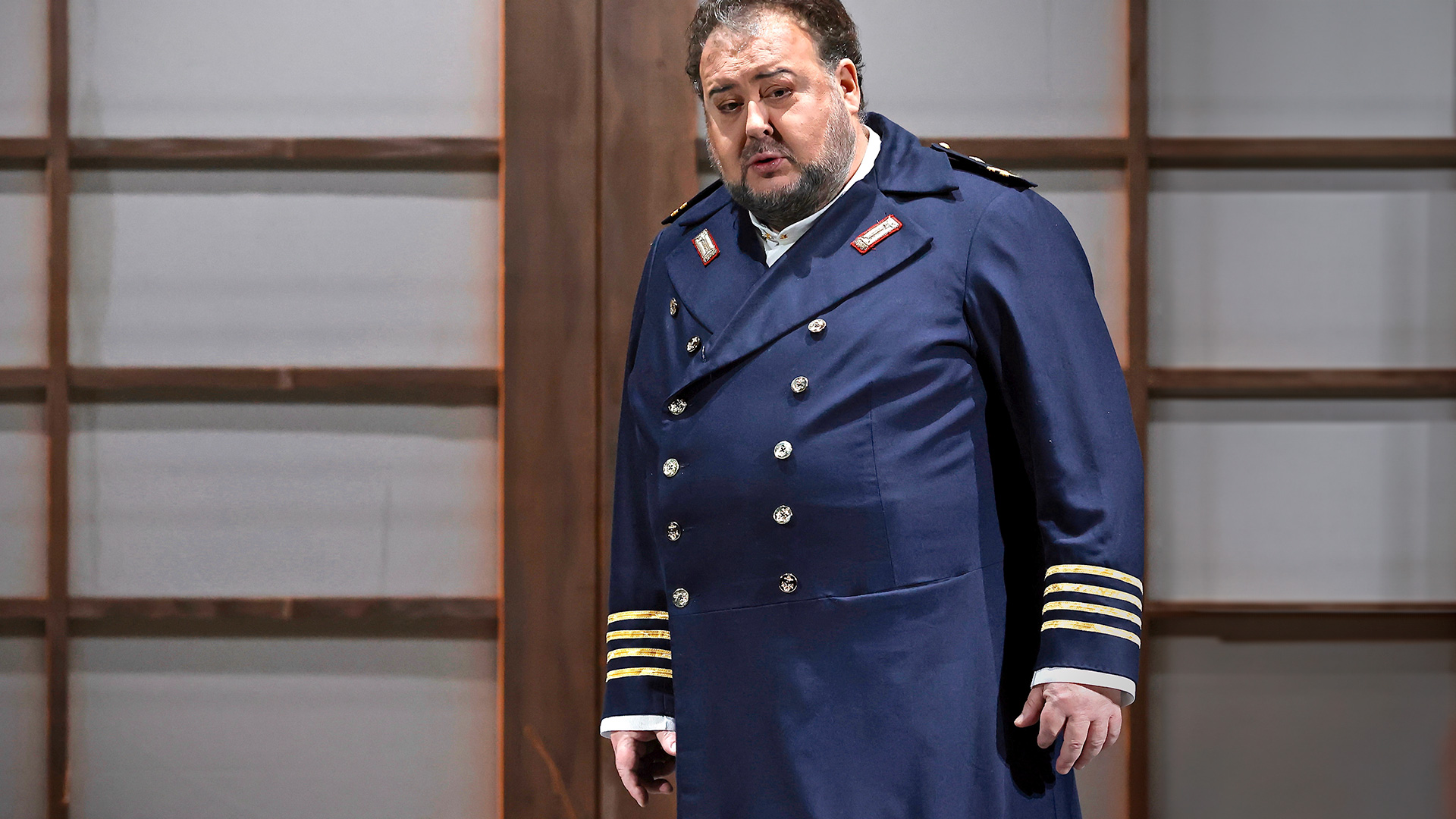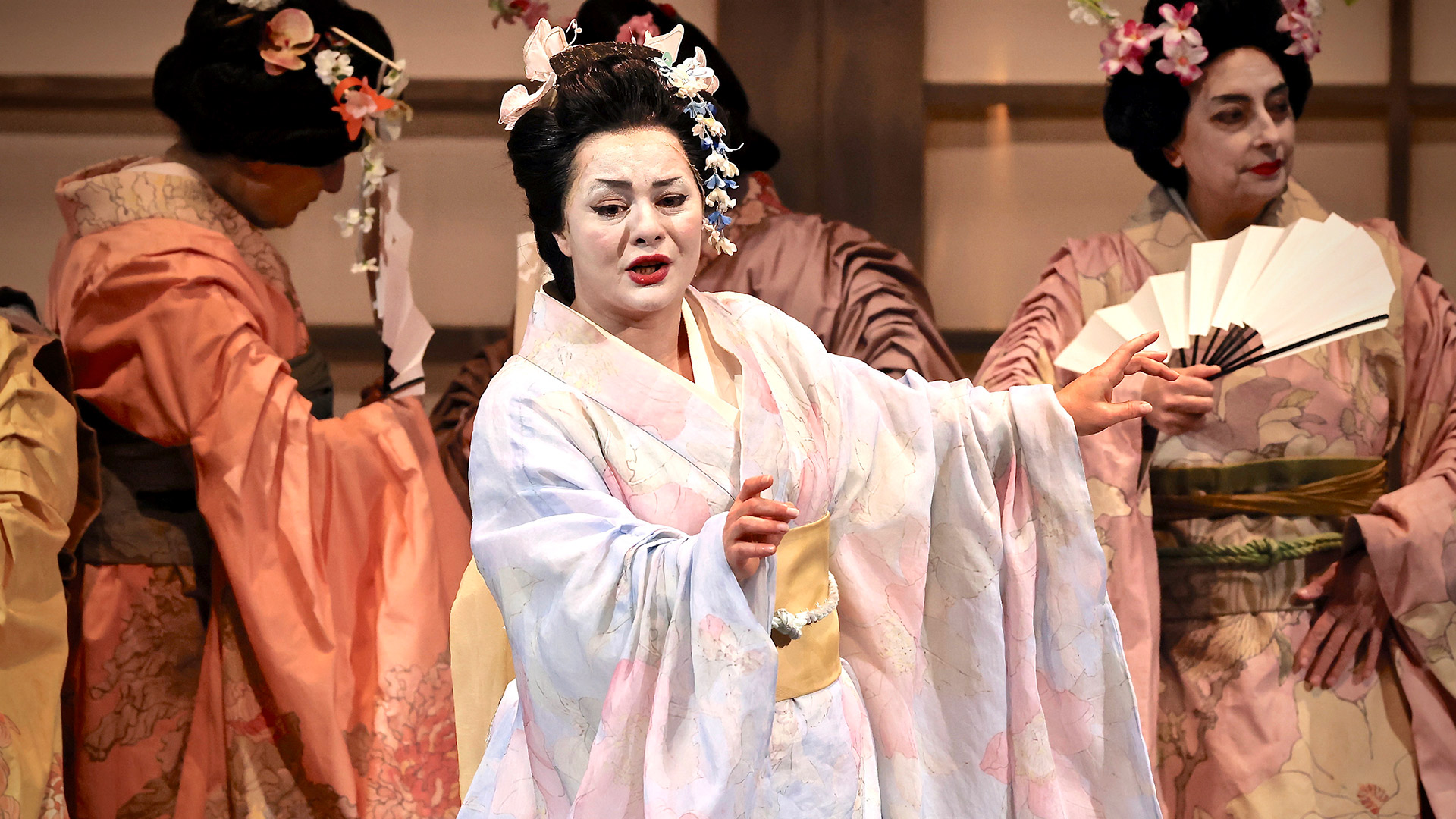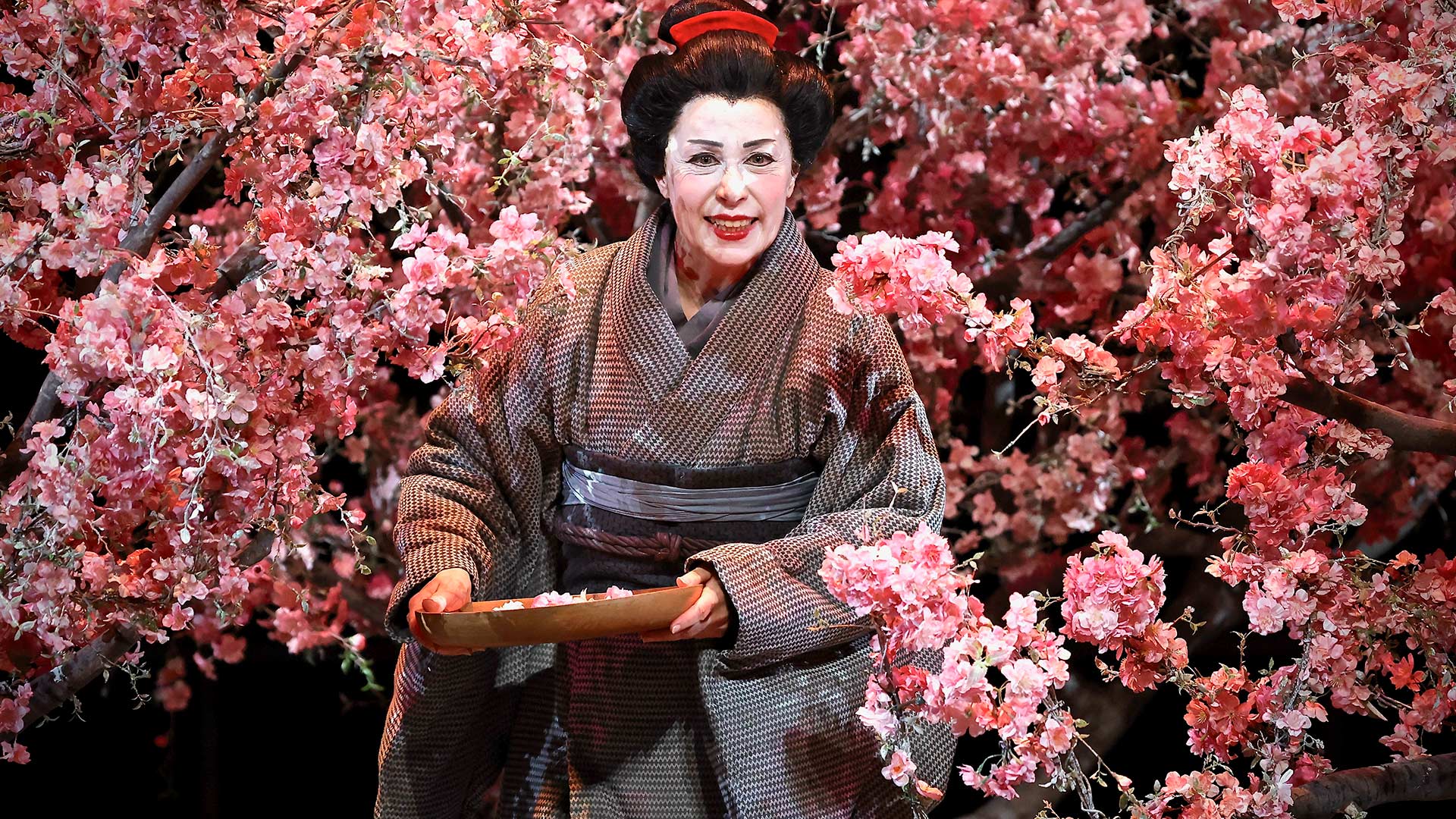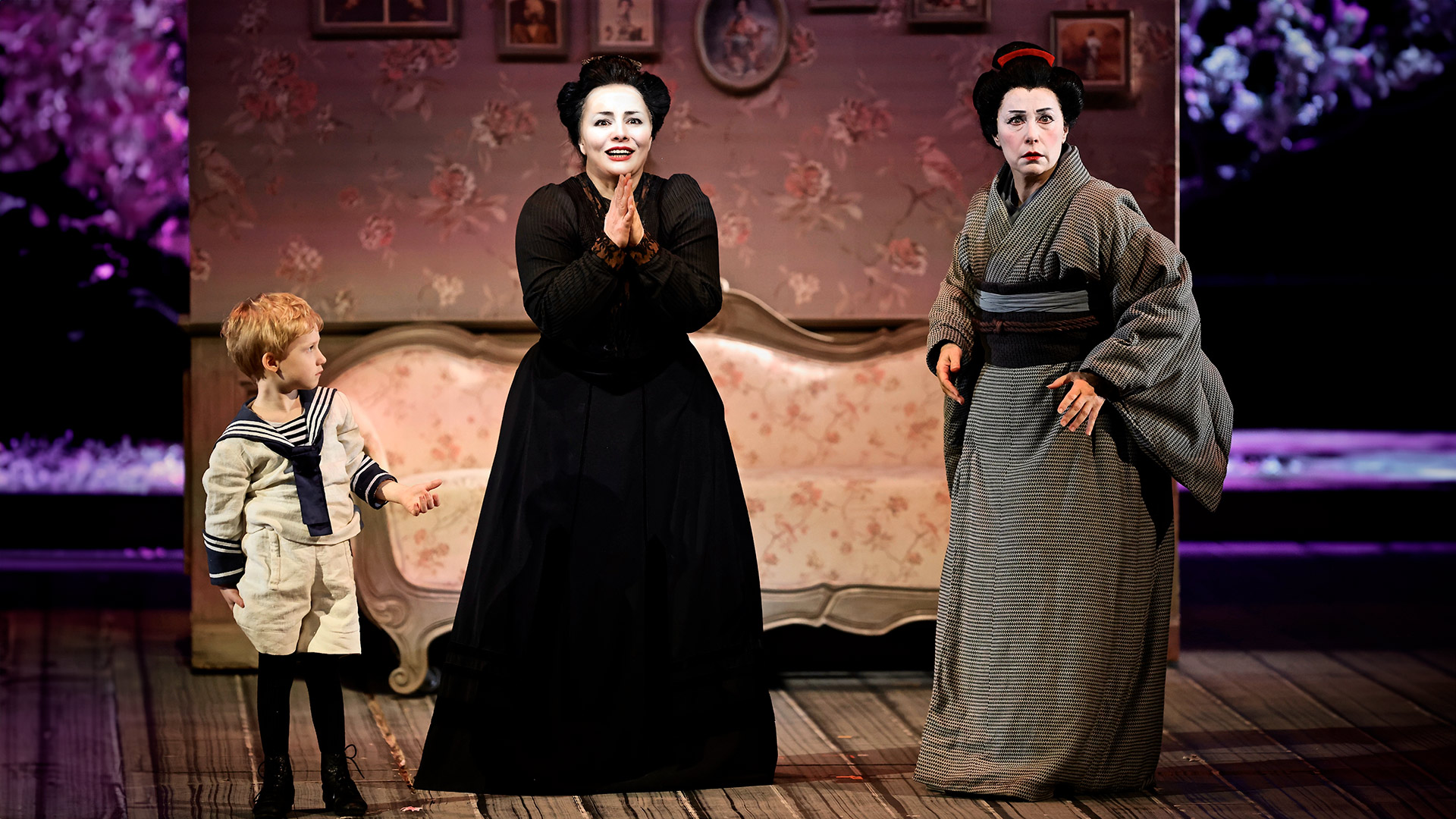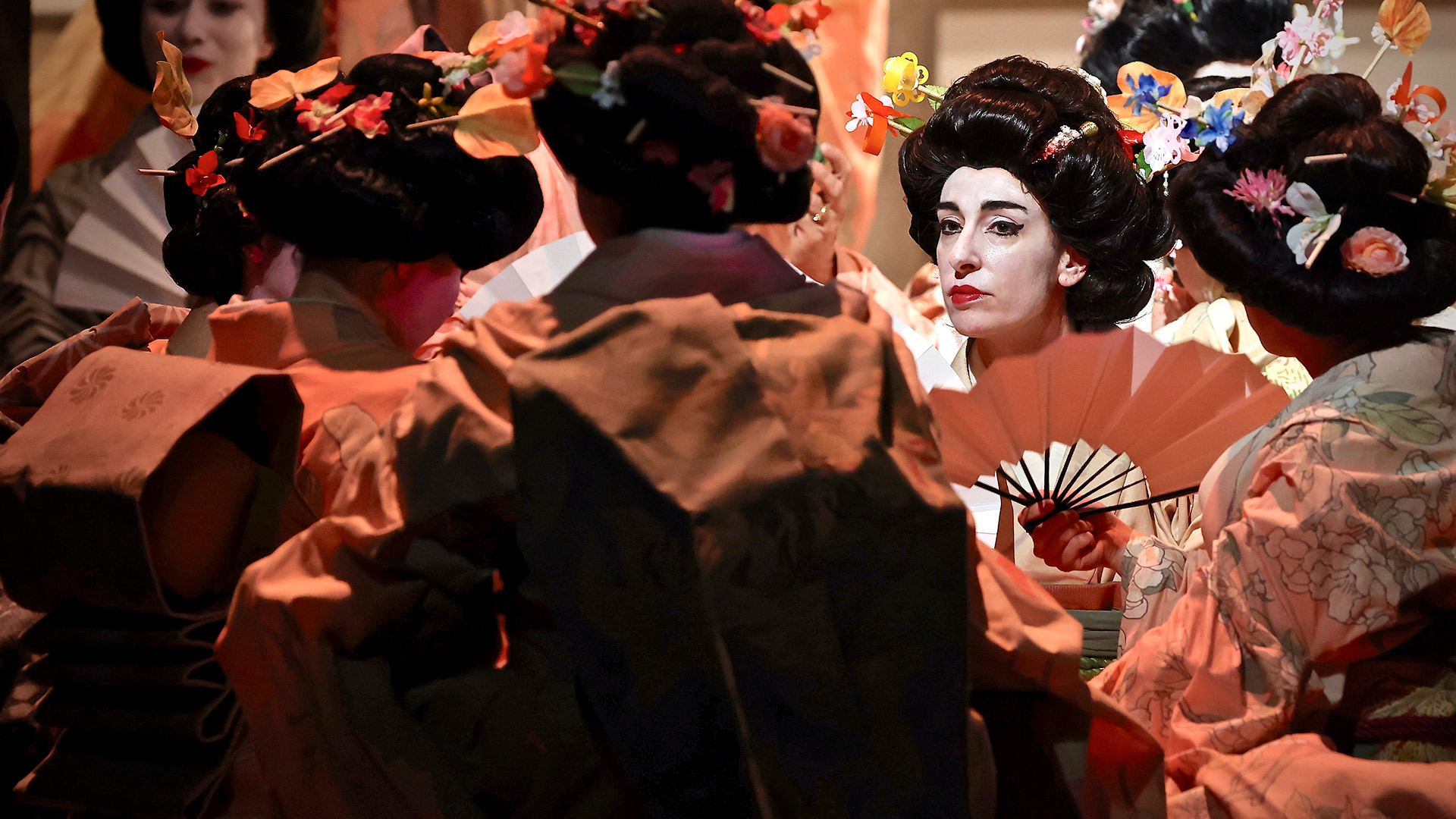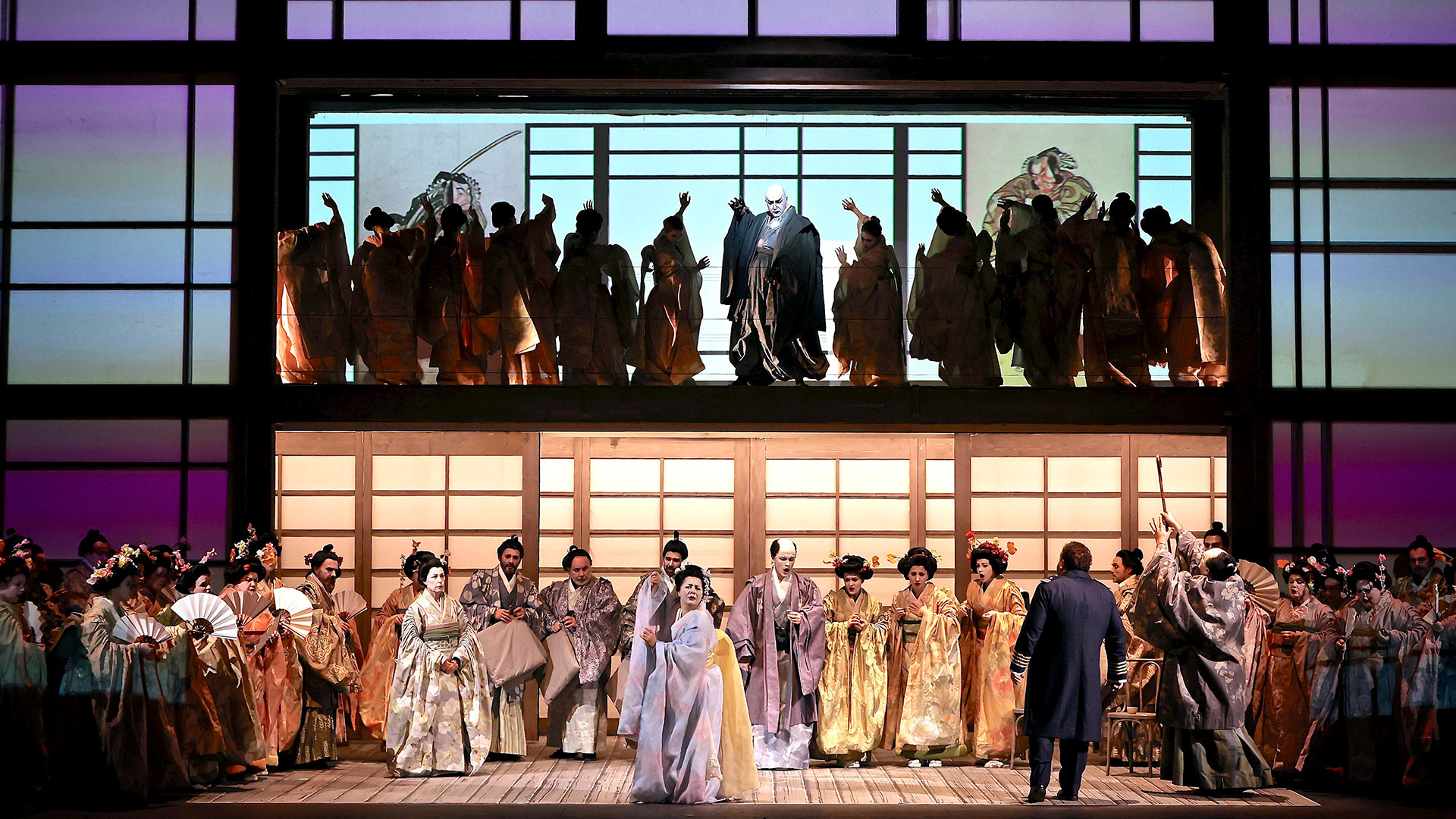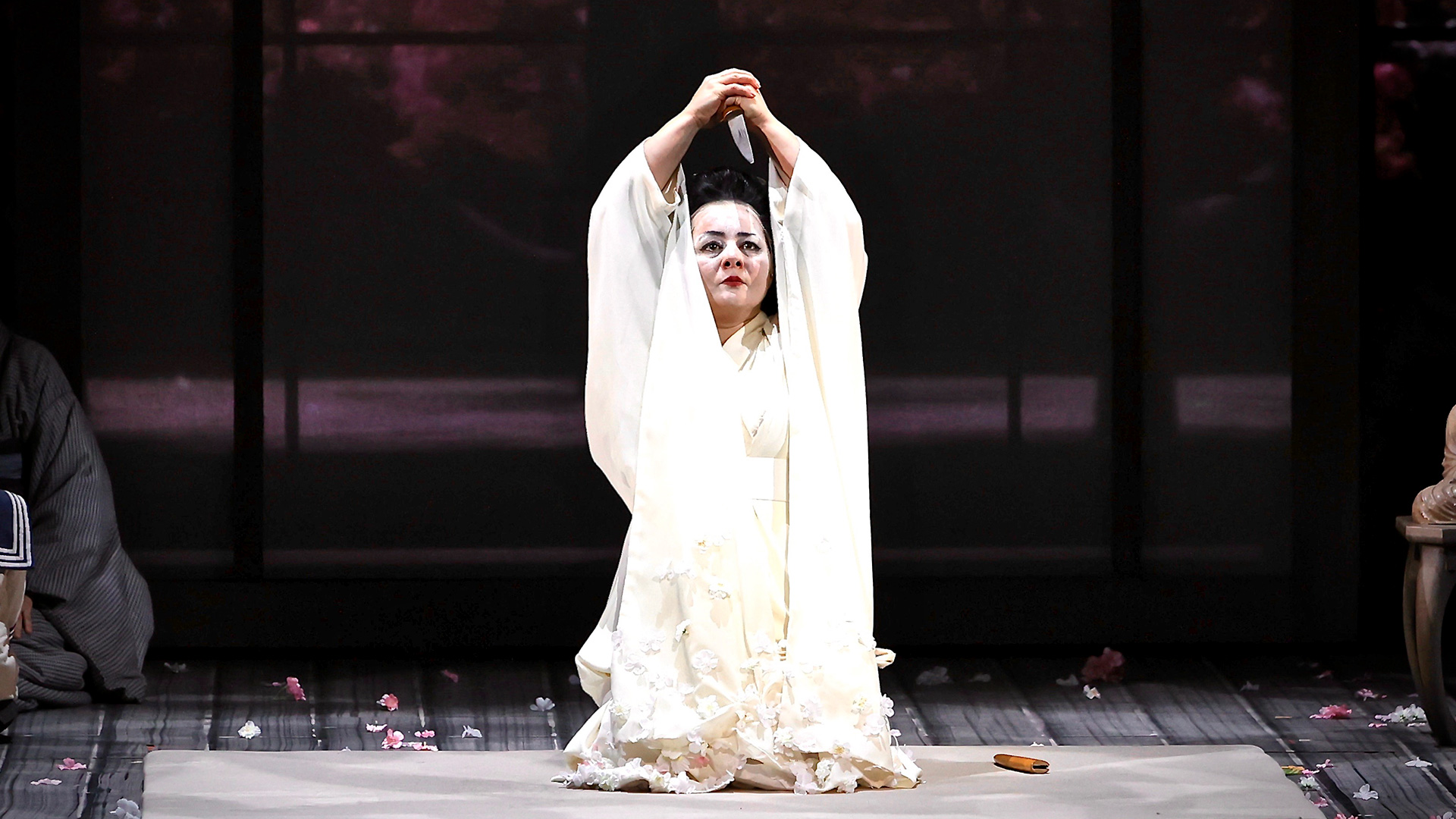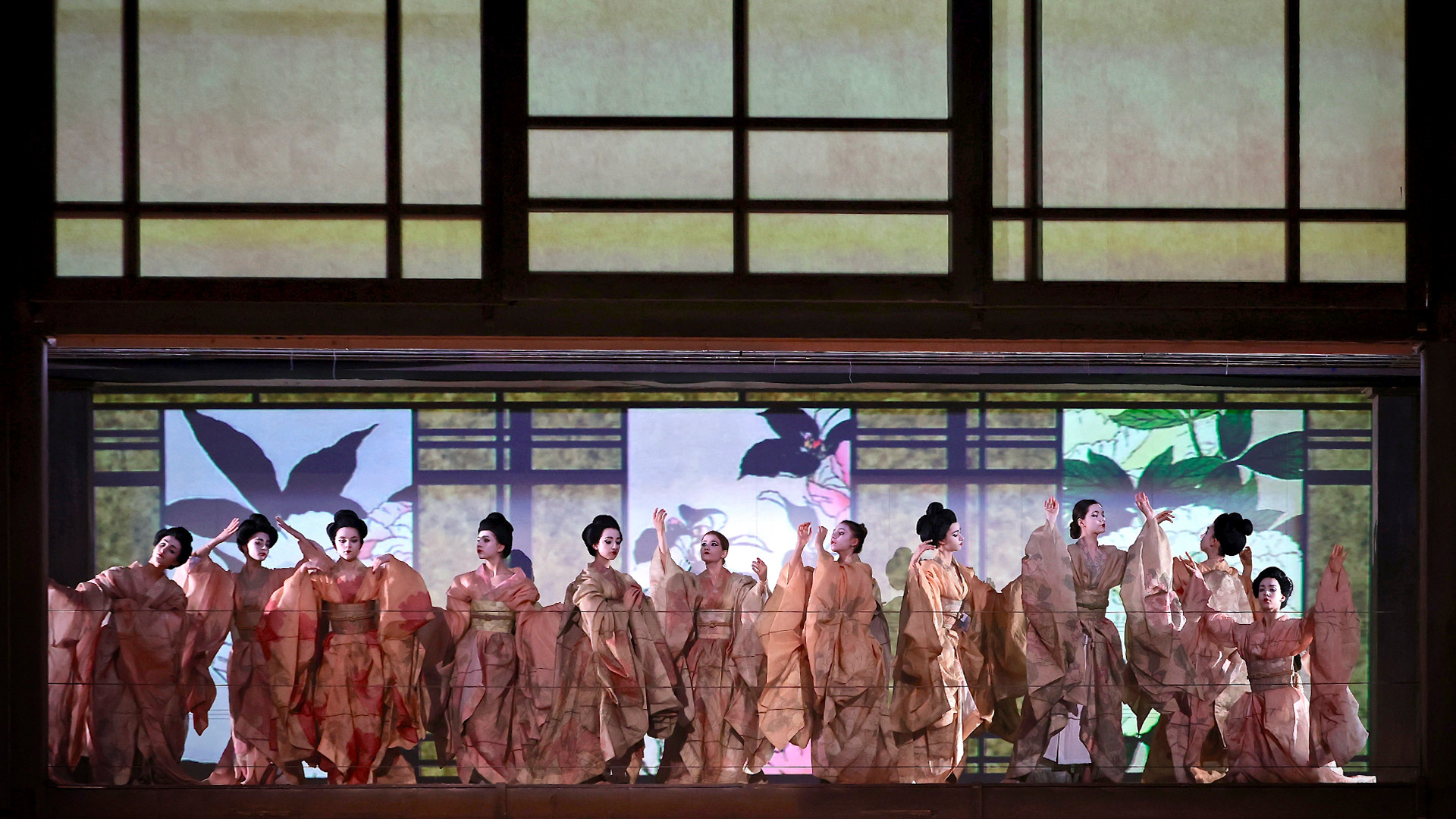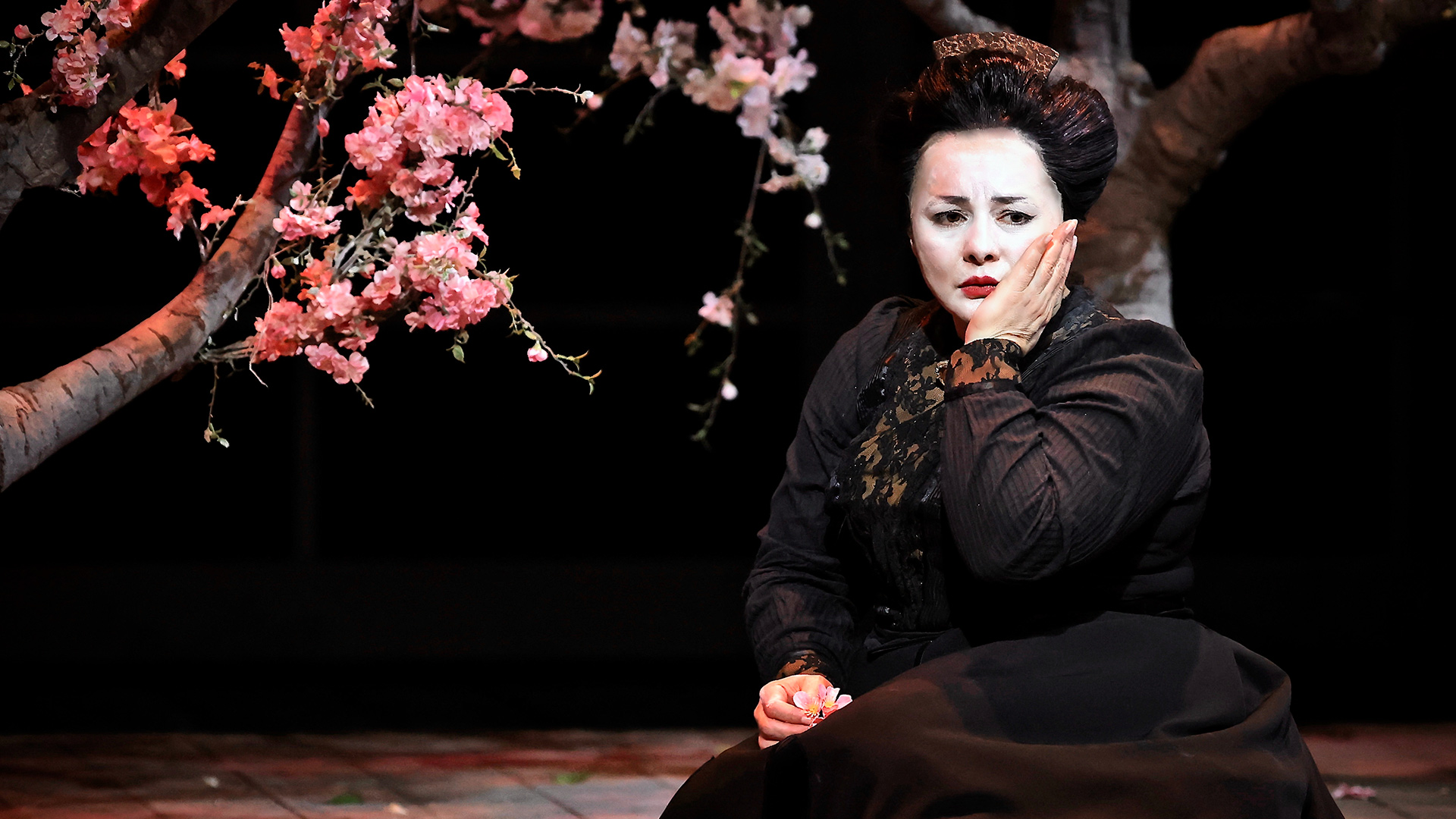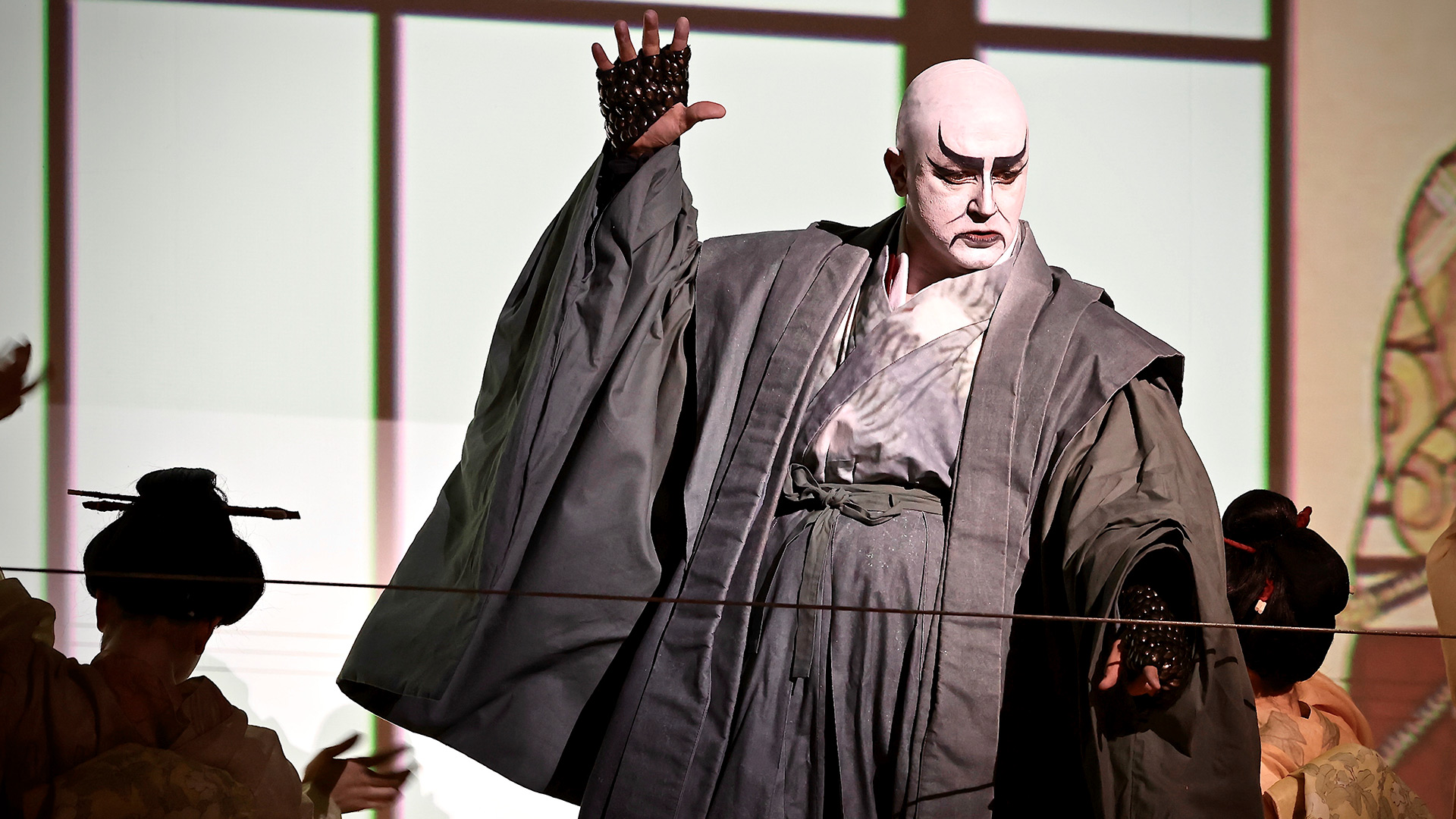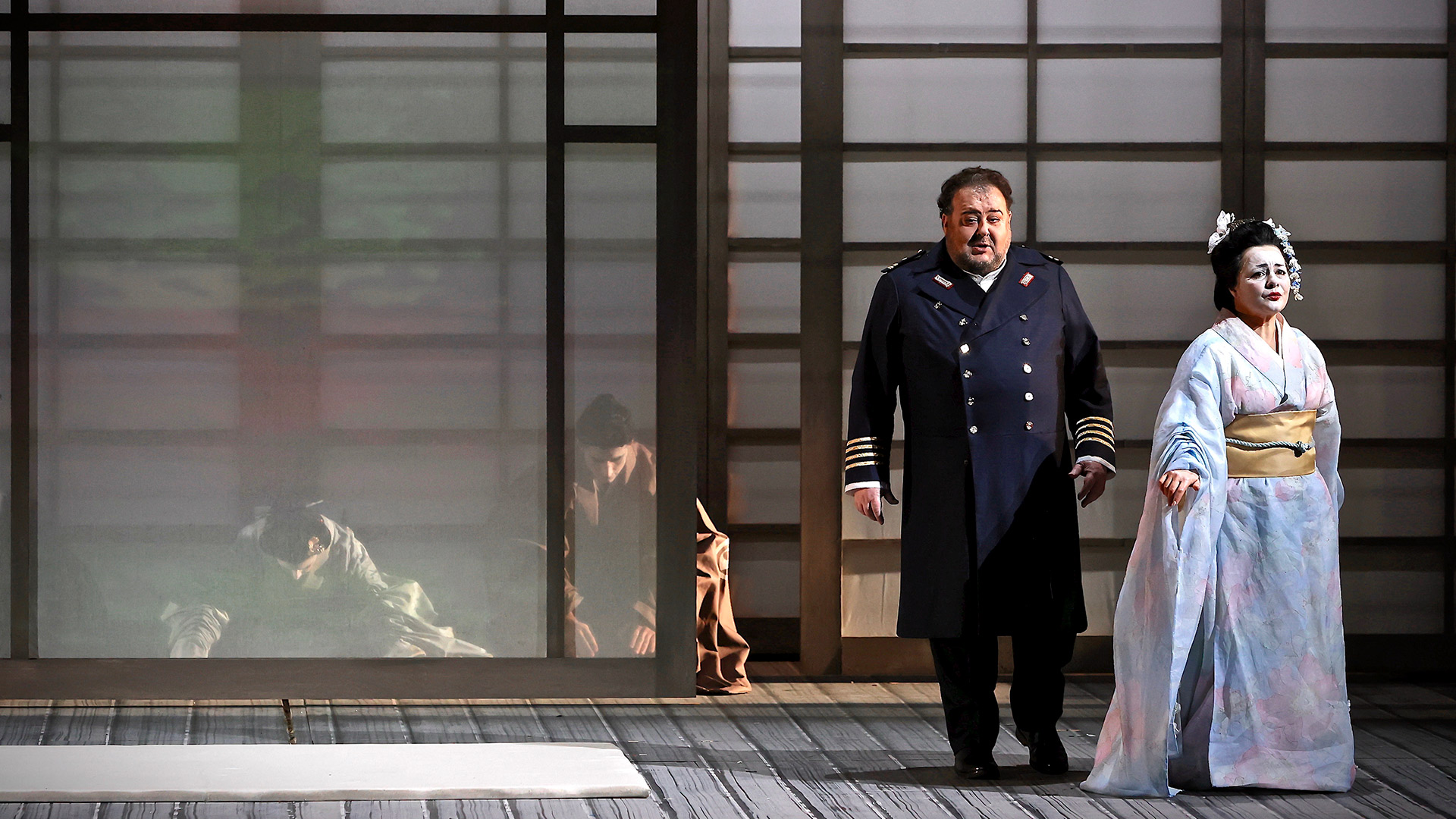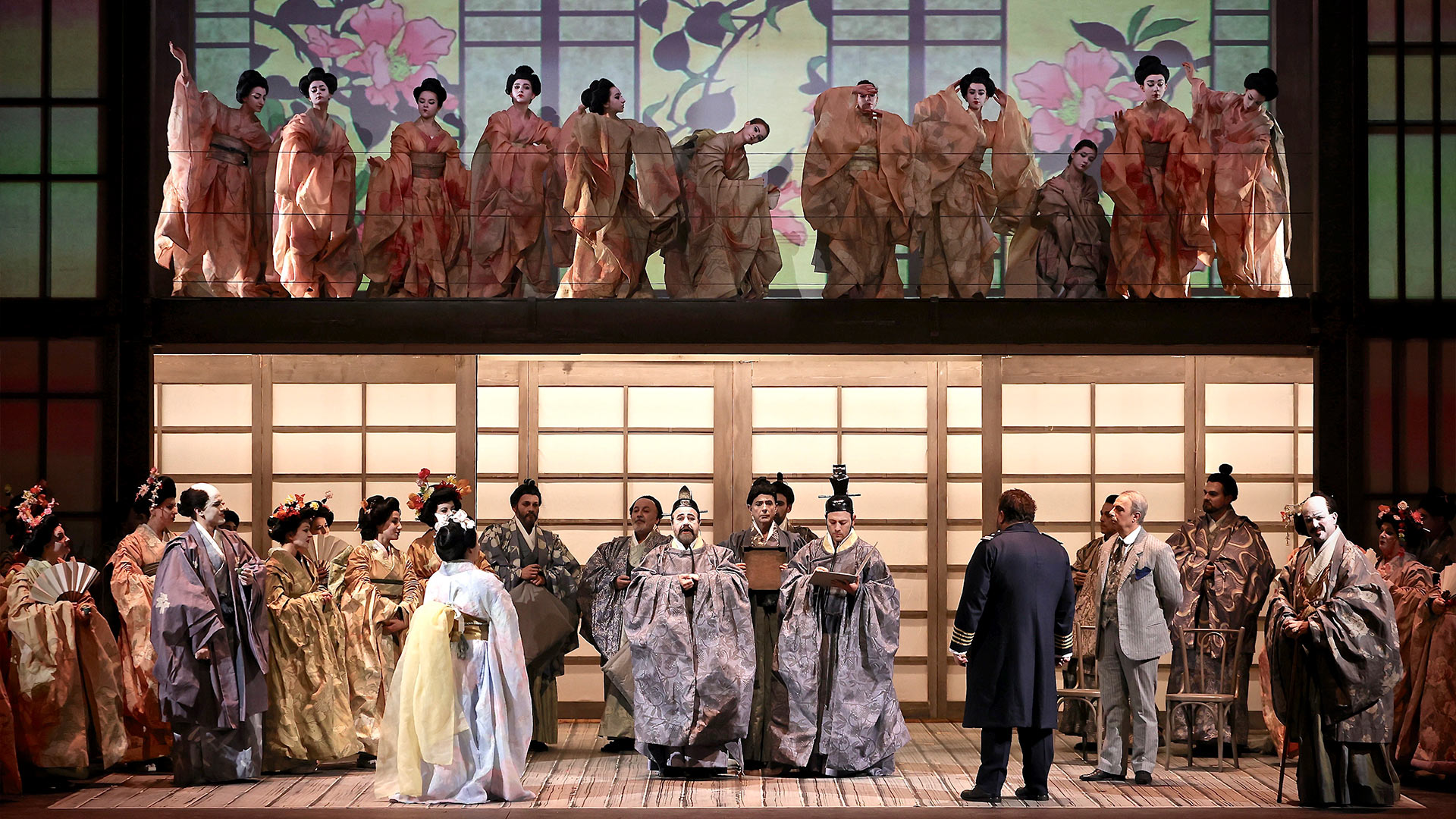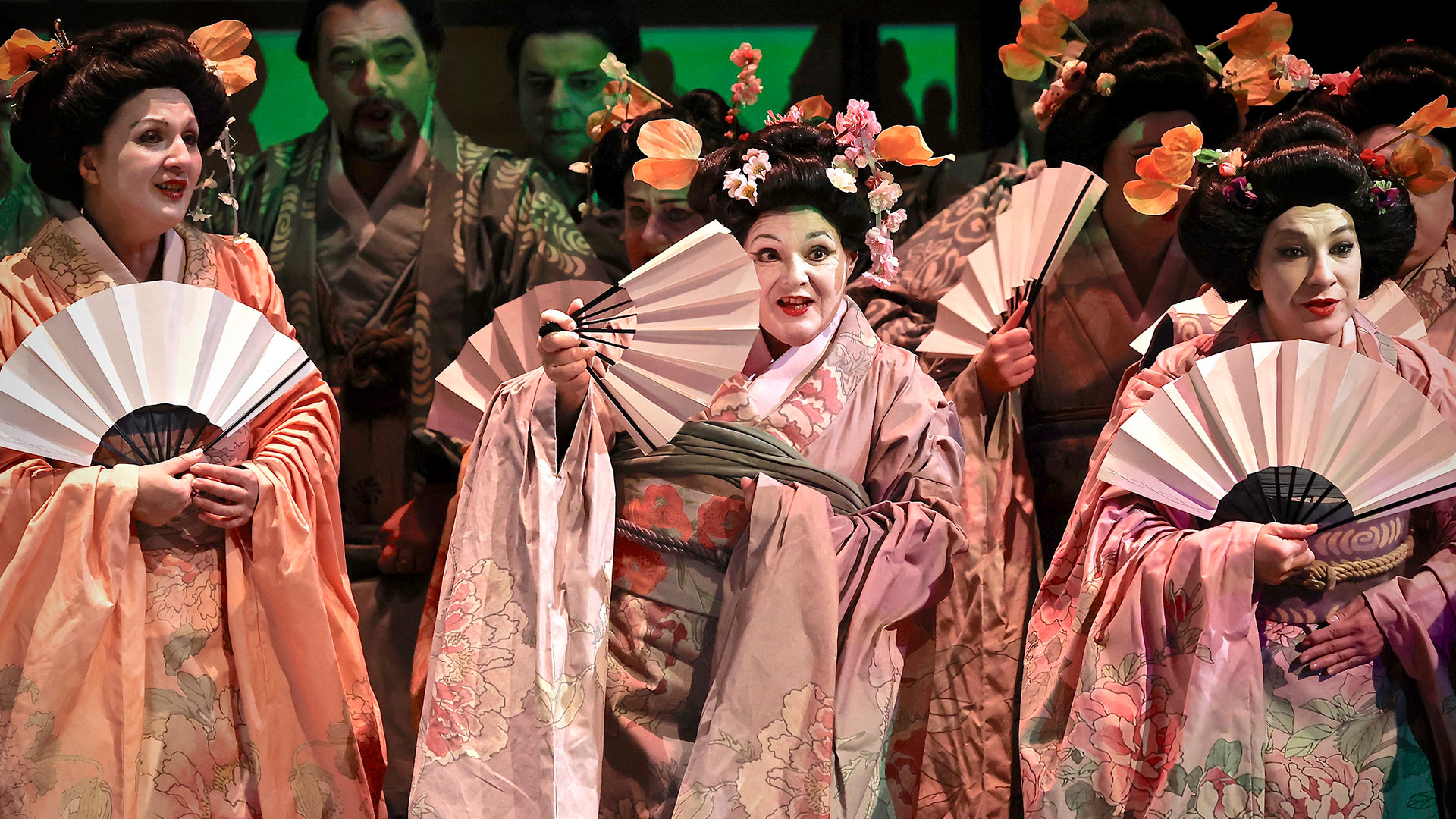A Japanese tragedy in three acts by Giacomo Puccini
libretto by Luigi Illica and Giuseppe Giacosa,
from David Belasco’s tragedy
Characters and interpreters:
Cio-Cio-San
Lianna Haroutounian
Jennifer Rowley (20, 27)
Suzuki
Manuela Custer
Caterina Piva (20, 27)
Kate Pinkerton
Alena Sautier
F. B. Pinkerton
Fabio Sartori
Matteo Lippi (20, 27)
Sharpless
Vladimir Stoyanov
Alessandro Luongo (20, 27)
Goro
Manuel Pierattelli
Il Principe Yamadori
Paolo Orecchia
Lo Zio Bonzo
Luciano Leoni
Il Commissario imperiale
Claudio Ottino
L’ufficiale del registro
Franco Rios Castro
Yakusidé
Luca Romano
Cio-Cio-San’s mother
Maria Letizia Poltini
Daniela Aloisi (20, 26)
La zia
Mariasole Mainini
Lucia Scilipoti (20, 27)
La cugina
Eleonora Ronconi
Adelaide Minnone (20, 27)
Conductor and répétiteur
Fabio Luisi
Director and set designer
Alvis Hermanis
Costume designer
Kristìne Jurjàne
Choreographer
Alla Sigalova
Lighting design
Gleb Filshtinsky
Video
Ineta Sipunova
Produced by Fondazione Teatro Carlo Felice di Genova
Orchestra, choir and technicians of Opera Carlo Felice
Claudio Marino Moretti, choirsmaster
Balletto Fondazione Formazione Danza e Spettacolo “For Dance” ETS
Staging director
Luciano Novelli
Stage musical director
Simone Ori
Répétiteurs
Sirio Restani, Antonella Poli
Stage musical assistants
Andrea Gastaldo, Anna Maria Pascarella
other Choir Master
Patrizia Priarone
Lighting Master
Silvia Gasperini
Masters at the supertitles
Simone Giusto, Bernardo Pellegrini
Head of musical archives
Simone Brizio
Scenic director
Alessandro Pastorino
Vice scenic director
Sumireko Inui
Consolle supervisor
Andrea Musenich
Stage technicians foreman
Gianni Cois
Electrician foreman
Marco Gerli
Tooling foreman
Tiziano Baradel
Audio/video foreman
Walter Ivaldi
Head of tailoring, shoemaking, make-up and wigs
Elena Pirino
Director’s assistant
Luca Baracchini
Video operator for choreographies
Irina Kashkova
Costume assistant
Alexandra Nikolaeva
Assistant lighting designer
Gianni Bertoli
Make-up and hair co-ordinator
Raul Ivaldi
Scenes, costumes and props
Fondazione Teatro Carlo Felice
Footwear
C. T. C. Pedrazzoli
Wigs
Mario Audello and Rochetti&Rochetti
Supertitles by
Fondazione Teatro Carlo Felice
Opera in brief
by Ludovica Gelpi
Madama Butterfly, Giacomo Puccini’s sixth opera, is unanimously considered one of the composer’s greatest masterpieces. The genesis was quite laborious, Puccini devoted a long time to the composition, studying Japanese culture in depth together with librettists Luigi Illica and Giuseppe Giacosa. In 1900, the composer had attended a theatrical performance of the play of the same name by David Belasco (itself based on a story by the American writer John Luther Long) and, greatly impressed, had decided to transpose the pièce to music. Four years later, the opera, a ‘Japanese tragedy in two acts’, was ready to be staged at La Scala: it was on 17 February 1904, and it was a resounding fiasco. The reasons for this failure remain unclear to this day Faced with such a negative reaction, the composer was disappointed. He was in fact convinced of the quality of his work, but decided to introduce some variations right away. First and foremost, a division of the second act into two parts (which were then more often referred to as separate acts, thus arriving at a total of three acts), the introduction of the aria ‘Addio fiorito asil’ (the leading tenor needed his own distinctive lyrical moment) and in general the softening of certain character traits, in particular of Pinkerton (who nevertheless remains a negative and perfectly recognisable character who is the advocate of the protagonist’s suffering). From its first revival at the Teatro Grande in Brescia in May of the same year, the opera was consecrated as one of Puccini’s best-loved successes. The first modifications were followed by others, which brought the opera to the so-called ‘fifth version’, the most commonly performed today.
The story has all the characteristics that make for an engaging tragedy, as well as the charm of the oriental setting reproduced with great accuracy. The relationship between the protagonist, Cio-Cio-San, and Pinkerton is complex and moves the action from a fundamental premise: cultural conflict. The US naval lieutenant is surprisingly contemptuous and consequently an unusual male co-star. Sharpless and Suzuki act in a sense as intermediaries, representing American and Japanese culture respectively, but are able to read reality in a more objective manner. Central is the parable of the protagonist: in the first act, Cio-Cio-San is a young woman rooted in Japanese culture. The same culture determined some of the greatest difficulties in her life: her father’s suicide, performed following the ancient ritual of Harakiri, and the consequent need to support herself by being a geisha. Cio-Cio-San therefore belongs to that world, but does not feel that he is part of it. The meeting with Pinkerton and the ensuing marriage are a chance for change that the protagonist fully embraces, developing a strong sense of belonging to American culture. For her, it is a mirage, a ‘something else’ that she does not even know deep down, but which she welcomes as an escape route. In the second act Cio-Cio-San declares herself stubbornly faithful to Pinkerton and seems not to care about the enormous gap between her dream and the reality that surrounds her. From the moment he abandoned her, any connection with that ‘different’ lives only within her, while the other characters and the spectators themselves clearly see her illusion gradually shatter. The final act is the moment when the circle closes: once the possibility of a different future has vanished, Cio-Cio-San decides to escape the circumstances, and does so by repeating her father’s gesture. With Harakiri, a ritual so rich in meaning, he declares his belonging to Japanese culture, but also declares that he does not want to accept it, and ‘with honour he dies’.
In the music, the contrast between the explicit references to the Oriental tradition, such as the use of five- and six-degree scales, and the tonal elements identifying the Western characters (including a quotation from the US national anthem) is readily apparent. The sound plot is full of recurring motifs of great lyricism, in dialogue with each other and constantly changing as the plot evolves, reproducing in detail the remarkable psychological nuances of each character. An example of this is the famous closed-mouth chorus, which acts as a symbolic amplifier of the interiority of the protagonist in a key passage, the last moment of illusion before the tragic epilogue.
